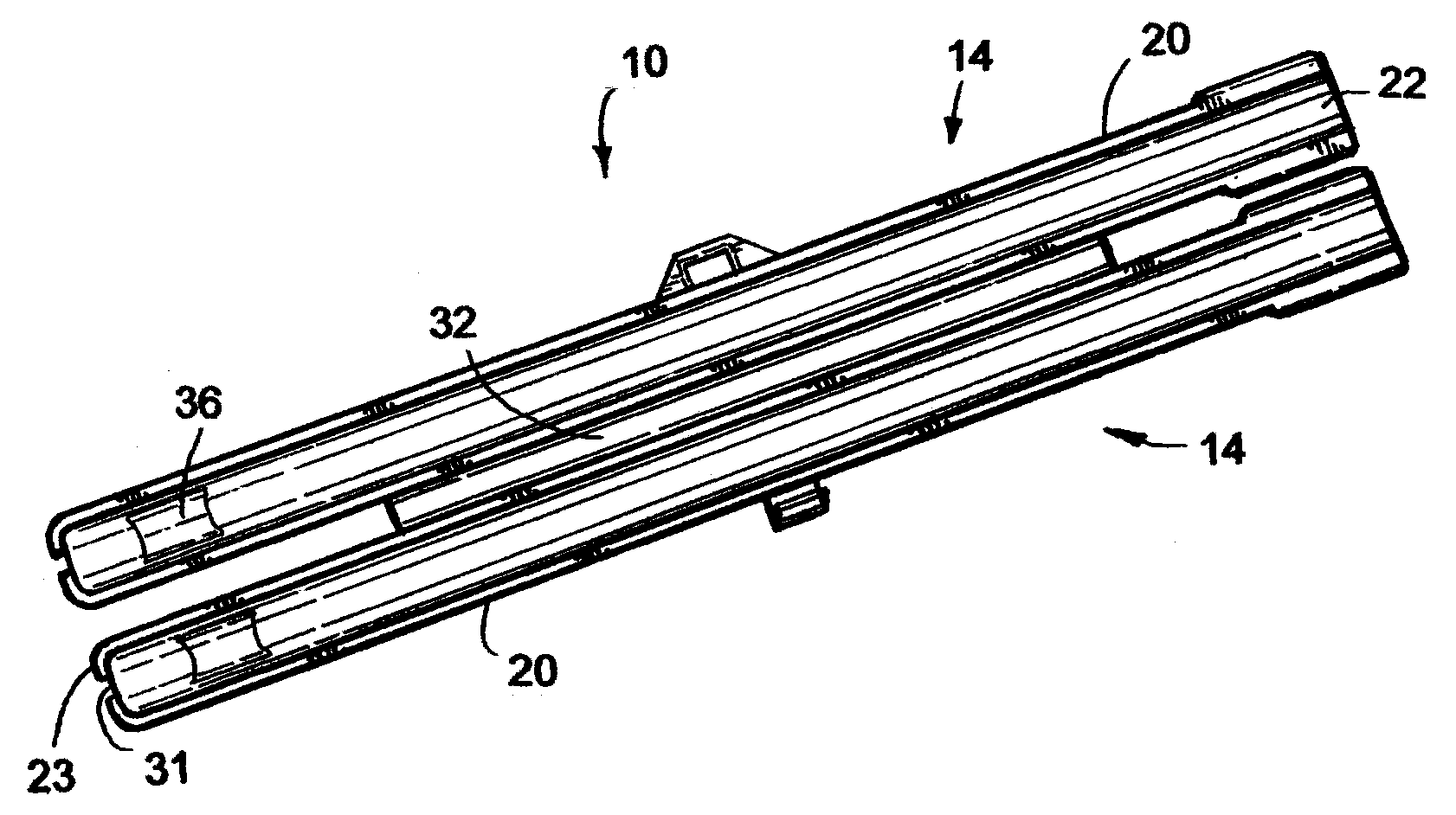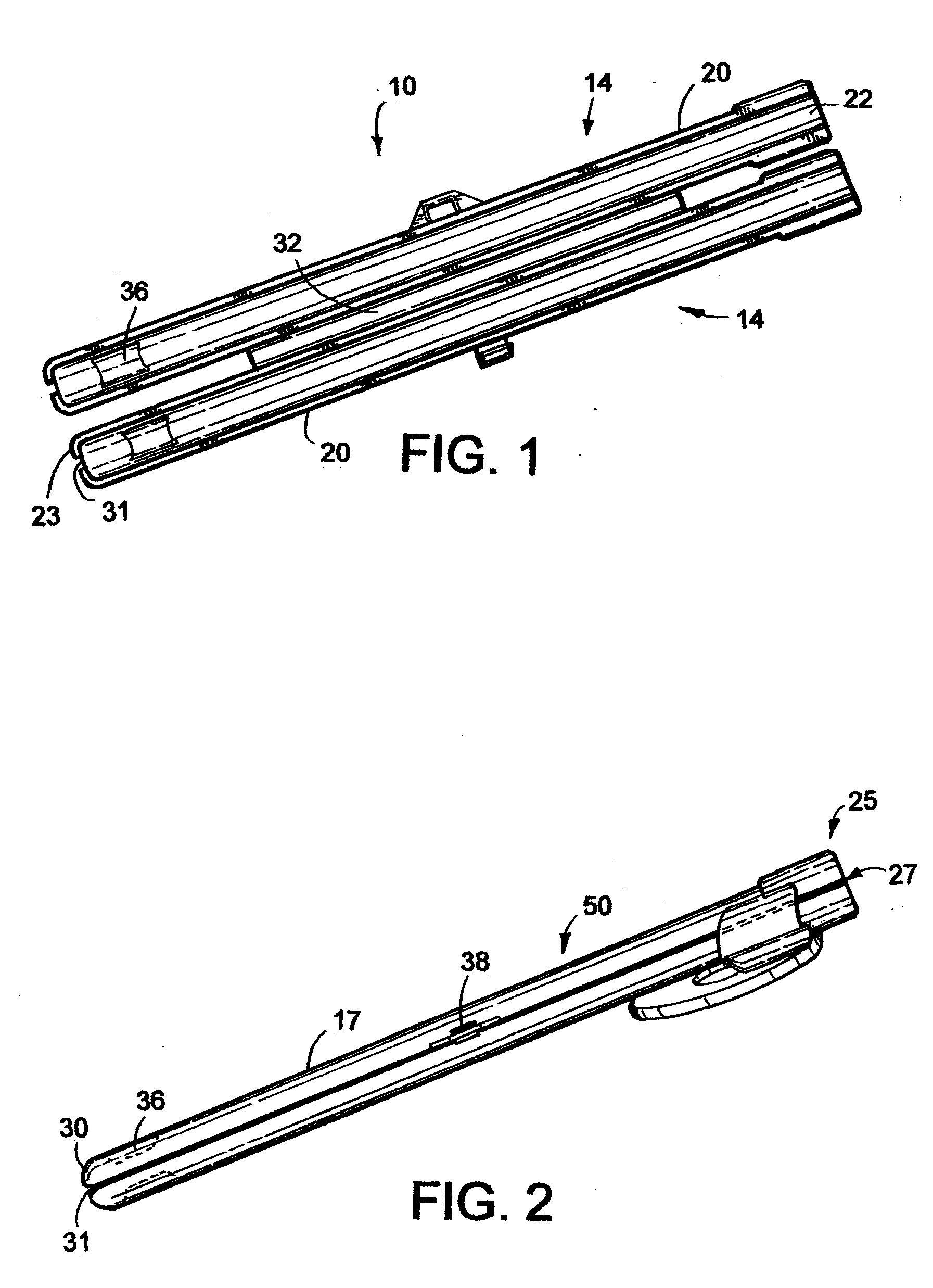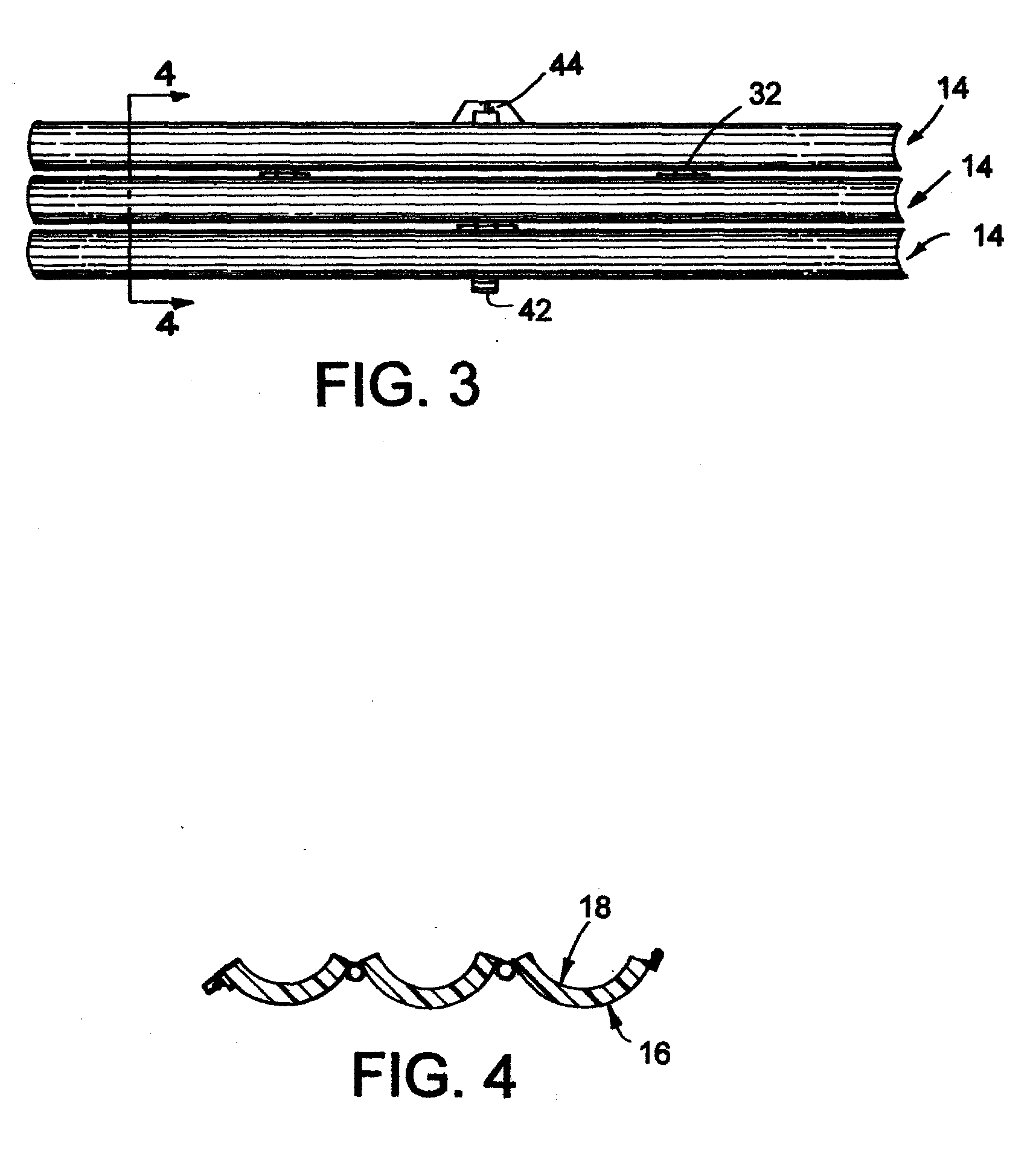Cooking can be a messy process.
Particularly when cooking in a food service setting, where numerous meats are being simultaneously prepared at various states of readiness, and under tremendous time pressures.
Cooking can be a messy process.
The most vulnerable members of our
community—elderly, children and people with weakened immune systems, who are dependent on organizational food services of adult homes, schools and hospitals, are at the highest risk of lethal
food poisoning.
Some of the worst poisoning cases occur when pathogenic microorganisms that are usually found in raw meats, contaminate prepared foods.
But not every food worker is ideal.
And things are often hectic in public service kitchens.
Some of the contaminants, such as
raw meat particles and
bacteria from the surface of the thermometer, will then adhere to the inner walls of the thermometer case, contaminating the case.
If the dirty thermometer is inserted into the clean case even once, the case will become forever contaminated.
Afterwards, even if the thermometer itself is always properly sanitized after use, it will become re-contaminated again and again after each
insertion into the contaminated case.
This leads to violent illness, deaths, and tremendous legal liabilities.
The problem with standard pen-like pocket-clip thermometer cases available on the market today, is that
contamination of the case is impossible to detect.
It is nearly impossible for the user to notice any stains or
food particles on the dark inner surface of the case.
An even bigger problem is that
contamination inside of the standard case, even if noticed, or known, is nearly impossible to clean.
However, the narrow confines of the bore allow no access for quick, simple and, most importantly, reliable cleaning and
drying of the entire internal surface.
Yet another problem associated with most top-loading thermometer cases is the risk of
botulism.
Aside from the moral and business issues of poisoning one's customers, negligence law generally puts a heavy burden of duty on food service providers to continually ensure the safety of their patrons.
Breach of this duty can lead to prolonged and expensive litigation and very unfortunate legal outcomes, including imprisonment, fines, and tremendous civil liability.
And that is why, instead of using thermometer cases of questionable cleanliness, responsible organizations often choose to discard and repurchase their entire stock of thermometers every few weeks.
Quality food thermometers are not cheap, and this approach is obviously an extremely expensive one.
Furthermore, such approach does not prevent the
contamination of the case and subsequent poisonings within the first several weeks of thermometer use, before it is discarded.
Measuring anal temperature is also a messy process.
Since medical thermometers are usually used only when a person feels ill, most thermometer users already have immune systems weakened by a
disease.
In such a common situation, contaminated thermometer may well be the cause of a
secondary infection.
Some kinds of
bacteria, the most dangerous and very common kinds, can lay dormant for years inside of a thermometer case.
As soon as the thermometer, infected with these dormant spores contacts the tissues or body fluids of a living
organism, the bacterial spores spring to life, rapidly multiplying and infecting the user of the thermometer.
Most disinfectants do not work on bacterial spores.
But tubular side-loading cases currently used to store modern medical thermometers (such as the case described in Pat. No. D526,585) are also generally narrow and do not allow proper access for inspection, cleaning and
drying.
Similarly, other types of thermometers, such as those used in scientific laboratory work, or commercial manufacture can become contaminated through storage in a small and convenient, but easily-contaminable, hard-to clean tubular cases.
Minute amounts of chemical substances trapped in the storage case and contaminating the thermometer, can have catastrophic effects on the rate and accuracy of chemical reactions and the quality of end products obtained.
Until recently, most designs for thermometer protective cases did not directly address the problem of cross-contamination of foods and patients through the use of thermometer.
The porous nature of the padding material usually made proper cleaning very difficult, if not impossible task.
But cleanliness remains their very serious deficiency.
However, there are several obvious drawbacks to implementation of such apparatus'.
One issue is the use of chemicals to sanitize the utensil, such as a food thermometer, that is used to penetrate prepared foods.
To successfully sanitize the thermometer probe, such chemical must be harmful enough to bacterial cells and other living microorganisms to kill them, or inhibit their growth.
Such substances can, and usually are, just as harmful to human cells as they are to bacterial cells.
The mechanisms of function of many such sanitizing substances are still not fully understood, let alone their effects on humans.
At the very least any potent
disinfectant will cause allergies in some people, thus making the case troublesome and legally-dangerous for use in food service settings.
Cases holding liquid
disinfectant are complex and relatively expensive to make.
The sanitizing medium must be regularly replaced, which can be cumbersome and expensive.
Cases with sanitizing medium inside, are larger and heavier than standard cases, negating most of the advantages associated with top-loading cases.
Wiping members, sometimes used in such cases to contain the fluid and to wipe the thermometer, are prone to deterioration.
But even when the wiping members are in good condition, they do not reliably prevent spills of
abrasive chemicals into the shirt pocket.
The contaminants caught between the
layers then recontaminate the thermometer as it is being taken out of the case.
The use of such plastics in top-loading cases of traditional closed-tube design does not solve the most important problems associated with case contamination.
It does, however create an additional major problem for users and manufacturers, as discussed below.
In the case of thermometer holders, it is impossible for a cook to determine how much, if any
disinfectant is being released from a particular case, and when it completely runs out.
Thermometers scratch the case walls during every
insertion and extraction.
All of this causes the disinfectants to release from the case walls at accelerated rates, soon leaving anti-bacterial plastics rather impotent.
The products of these reactions may be toxic, carcinogenic, or otherwise harmful to
human body.
Even if no health statistics is yet available on effects of disinfectants used in
antimicrobial plastics, some customers may still be reluctant to insert a utensil with traces of chemical disinfectant into their food, and therefore reluctant to buy such a case.
Of even greater importance is the fact that anti-microbial plastics are generally limited in their anti-microbial characteristics.
Anti-microbial plastics are not effective against all types of pathogenic microorganisms and will not instantly kill bacteria on contact.
Even if the case is new, with still-potent anti-microbial characteristics, some bacteria may well survive for some minutes, hours, or days on the surface of the case, leading to thermometer recontamination within this time.
As soon as the spores of these bacteria are transferred back into food, they spring to life, contaminating the food, and poisoning the
consumer.
There need not be a great number of bacterial spores for such contamination to be deadly.
Young children and people with low acidity in the digestive
system are at particularly acute risk.
The bacteria will flourish inside the case, which will lead to thermometer contamination.
Due to the limited effectiveness of anti-microbial cases, health risks arise for consumers, and serious legal risks arise for manufacturers and distributors of such cases.
There is no simple way for consumers to check the case for decay or discoloration inside, and no simple way to clean it, due to the structural deficiencies described above.
Then, the cook, the victim, or dead victim's representatives will sue the manufacturers and distributors of anti-microbial cases for inducing false reliance, by giving a false and unverifiable sense of security in the safety of their products.
In light of the problems and liabilities associated with traditional thermometer cases, there is a long-standing and unsatisfied need in the art for a case that can be maintained verifiably clean, without sacrificing the all-important modern thermometer case conveniences, such as the smallest possible form factor,
solid protection of the sensitive thermometer parts, and quick and easy thermometer removal and insertion without any need to open the case.
 Login to View More
Login to View More  Login to View More
Login to View More 


